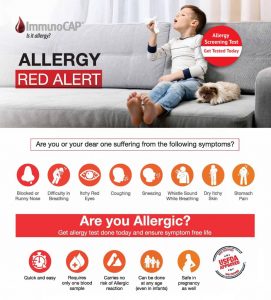What Are the Common Asthma Triggers?

Bronchial asthma, also known as asthma, is a chronic lung disease characterised by the narrowing of the airways in the lungs, which can make breathing difficult. This respiratory condition affects both children and adults and doesn’t have a cure.
As a result, individuals must take measures to prevent asthma attacks. An effective way to achieve this is by avoiding common asthma triggers. These are substances that can cause and aggravate asthma symptoms, provoking asthma flare-ups.
This article discusses what causes asthma attacks and how asthma patients can prevent these effectively.
What are the 5 Causes of Asthma?
Here are five common asthma triggers that asthma patients must avoid:
- Dust Mites
These include microscopic bugs that are common in households. They feed on dander or flakes of dead skin that are shed by animals and humans. Individuals can prevent asthma attacks triggered by dust mites by:
- Using allergen-proof bedding to form a barrier between dust mites and themselves.
- Washing the bedding weekly and ensuring its completely dry before use.
- Vacuuming floors, rugs, upholstery, etc., with a vacuum with a HEPA (High-Efficiency Particulate Air) filter.
Ensuring cleanliness is frequently used areas can help prevent asthma flare-ups by dust mites.
- Air Pollution
Polluted air translates to poor air quality that can trigger asthma flare-ups as it is full of harmful substances such as car, factory, and crop-burning smoke. Smoke from burning wood and plants makes a dangerous mix of gases and small particles that irritate the airways, making them narrower and reducing an individual’s ability to breathe comfortably.
To avoid asthma triggers caused by air pollution, individuals must:
- Check the local air quality index before leaving the house.
- Avoid areas where air pollution is high.
- Keep their mouth and nose covered when walking in smoke-filled areas.
- Pests
Cockroaches, mice and other household pests are also common asthma triggers. They are often found around stale food and crumbs. To reduce pests in the house, individuals must:
- Store food items in airtight containers.
- Ensure trash bins are closed at all times.
- Sweep and vacuum areas that attract pests.
- Seal any openings or cracks in the wall, cabinets, baseboards, etc.
- Clean any spills and crumbs immediately.
Keeping the above points in mind will help individuals to maintain a clean space that doesn’t attract pests, reducing the chances of asthma attacks.
- Mould
Inhaling mould can trigger asthma flare-ups irrespective of whether the individual is allergic to mould. Commonly found in damp areas of the house, such as bathrooms, basements and kitchens, these woolly growths are caused by a fungus and are extremely unhygienic.
Individuals must take the following measures to reduce mould exposure:
- Use an air conditioner (AC) or dehumidifier to reduce indoor humidity.
- Dry wet or damp items within a day or two to avoid mould growth.
- Turn on the exhaust or bathroom fan post-shower.
- In case of mould growth, individuals must scrub the area with water and detergent and ensure it dries completely.
- Tobacco Smoke
Tobacco smoke is not healthy for anyone. However, for asthma patients, it is especially dangerous. This is because it contains pollutants that increase inflammation in the airways and irritate respiratory organs.
While asthma patients shouldn’t smoke themselves, they must also be vigilant about passive smoking. Passive smoking is when smoke created by one person is inhaled by another. Asthma patients must avoid taking part in gatherings where others are smoking to prevent asthma attacks.
Other than the above-mentioned asthma triggers, disinfectant products, pet dander, viral infections, extreme physical exercise and general lack of cleanliness are common asthma triggers.
What To Do During an Asthma Attack?
After discussing what triggers asthma, it’s also important to learn how individuals can manage an asthma attack. Here’s what asthma patients must keep in mind:
- Individuals must stay calm.
- Individuals must use their inhaler to relieve symptoms as directed by their doctor.
- Individuals can take other medicines and administer any other treatments that have been recommended by their doctor.
- In case the symptoms persist or worsen, individuals must seek medical treatment at the earliest.
Asthma patients must keep the above-mentioned points in mind to administer first aid effectively. Further, they must consult a medical professional and book a test with Dr Lal PathLabs for proper management of this respiratory condition.
FAQs
- What Are The 5 Most Common Triggers of Asthma?
The five most common asthma triggers include dust mites, air pollution, pests, mould and tobacco smoke. Asthma patients must avoid coming in contact with these to prevent asthma attacks.
- Can AC Trigger Asthma?
Air conditioners (ACs) can trigger asthma if they suffer from maintenance problems. To prevent asthma attacks, individuals must conduct strict routine cleaning of their ACs.
- What is Silent Asthma?
Silent asthma is asthma with no audible symptoms. Individuals suffering from this condition experience chest tightness and shortness of breath but no coughing or wheezing.















